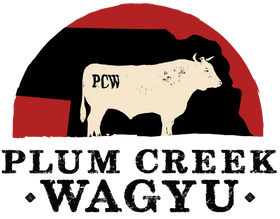The Wagyu Mythbusters: Separating Fact from Fiction
Introduction
Wagyu beef is surrounded by myths and misconceptions, from its origins to its grading and health benefits. Many believe that all Wagyu comes from Japan or that it's always exorbitantly priced. In this post, we’ll debunk the biggest Wagyu myths and set the record straight.
1. Myth: All Wagyu Beef Comes from Japan
Fact: While authentic Wagyu originated in Japan, high-quality Wagyu is also raised in the U.S., Australia, and other countries. American Wagyu, for instance, comes from Japanese Wagyu cattle crossbred with traditional American breeds, creating a unique but equally rich flavor profile.
2. Myth: Wagyu is Always Expensive
Fact: While A5 Japanese Wagyu can be costly, there are more affordable cuts and grades available. American Wagyu and different Wagyu hybrid cuts offer incredible quality at a lower price point, making it more accessible to a wider range of consumers.
3. Myth: More Marbling Means Better Wagyu
Fact: Marbling is a key characteristic of Wagyu, but higher marbling doesn’t always mean better taste. Some diners prefer slightly less marbled cuts for a more balanced texture and beefy flavor. The best cut depends on personal preference.
4. Myth: Wagyu is Unhealthy Due to Its Fat Content
Fact: Wagyu contains a high percentage of monounsaturated fats and omega-3s, which can be beneficial for heart health when consumed in moderation. Its unique fat composition makes it different from conventional beef.
5. Myth: You Must Cook Wagyu Like a Regular Steak
Fact: Wagyu’s high fat content means it requires different cooking techniques. Cooking it at lower temperatures and avoiding over-seasoning helps preserve its buttery texture and rich flavor.
6. Myth: Wagyu and Kobe Beef are the Same
Fact: Kobe beef is a specific type of Wagyu from the Hyogo Prefecture in Japan. While all Kobe is Wagyu, not all Wagyu is Kobe. The strict criteria for Kobe beef make it one of the most exclusive varieties in the world.
Conclusion
Understanding Wagyu beef beyond the myths helps consumers make informed choices. Whether you’re exploring different Wagyu origins or cooking it properly, knowing the facts ensures you get the best experience from this luxurious beef.
Related Posts
Wagyu Myths Debunked: Separating Fact from Fiction
Think you know Wagyu? Think again! We’re debunking common myths about Wagyu beef, from its origins to its marbling, grading, and price.
Why Wagyu Beef is Worth the Price: A Breakdown of Quality and Value
Is Wagyu beef really worth the price? Discover what makes Wagyu stand out from other premium meats, from superior marbling to unmatched flavor and tenderness.
What is F1, F2, and Fullblood Wagyu? Understanding Wagyu Genetics
Not all Wagyu is the same! Learn the differences between F1, F2, and Fullblood Wagyu, and discover how genetics impact marbling, flavor, and beef quality.
Wagyu on the Grill: Tips for a Sizzling Summer BBQ
Fire up the grill! Learn expert tips for grilling Wagyu beef to perfection, from the best cuts to seasoning and cooking techniques that maximize flavor and tenderness.
How to Render Wagyu Fat and Use It in Your Cooking
Don’t let Wagyu fat go to waste! Learn how to render Wagyu fat and use it to enhance your cooking—perfect for frying, roasting, and adding rich flavor to any dish.
The Ultimate Wagyu Burger: How to Build the Perfect Bite
Elevate your burger game with the ultimate Wagyu burger! Discover the best buns, toppings, and sauces to complement the rich, buttery flavor of Wagyu beef and build the perfect bite.








